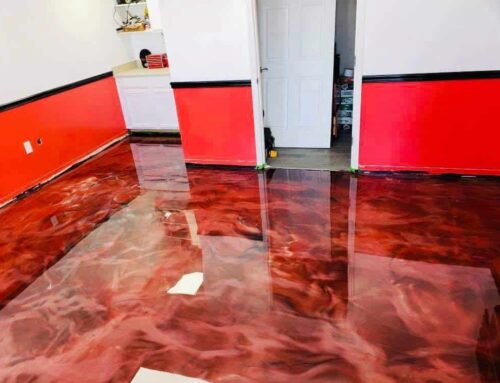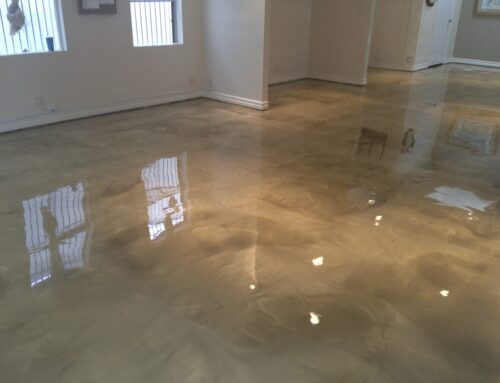Preparing your floor for epoxy coating requires a systematic approach to ensure a flawless finish and long-lasting results. The process begins with a thorough inspection of the floor surface. Any cracks or imperfections should be addressed first by using a concrete patch to fill them in. Ensuring a level surface is crucial for the success of the epoxy coating, so applying a self-leveling compound may be necessary to even out any uneven areas.
Once the cracks are patched and the surface is level, it’s important to clear the floor of any debris and thoroughly clean it. Using a degreaser and scrub brush will help remove any dirt, oil, or other contaminants that could affect the adhesion of the epoxy. After cleaning, it’s essential to fill any remaining cracks or divots with an epoxy filler or patching compound, smoothing out the patched areas for a seamless finish.
Before applying the epoxy coating, it’s crucial to conduct a moisture test to ensure the floor is dry enough to prevent any issues with adhesion or bubbling. If excess moisture is present, appropriate drying methods should be employed, and moisture-blocking primers may need to be applied. By meticulously preparing the floor according to these steps, you can ensure a smooth and successful application of the epoxy coating, resulting in a durable and attractive finish for your floor.
Floor Inspection
Before starting the epoxy coating process, thoroughly inspect your floor for any imperfections or damage that may affect the final result.
- Cracks in the Concrete
Inspecting your floor thoroughly before commencing the epoxy coating process is crucial to ensure a flawless final result. Begin by meticulously examining the concrete surface for any cracks. These fissures can indicate underlying structural issues that must be rectified before applying epoxy. Employ a flashlight to illuminate the area, as smaller hairline cracks may not be immediately visible. It is imperative to repair these cracks promptly using a high-quality concrete patch or filler specifically designed for such purposes. - Leveling the Floor
Another essential aspect of floor preparation is ensuring the overall levelness of the surface. Uneven areas can lead to problems such as pooling of the epoxy during application, resulting in an irregular finish. To achieve a uniformly smooth surface, consider utilizing a self-leveling compound. This specialized material flows easily and sets to create a seamless and flat substrate, guaranteeing a professional-looking epoxy coating. - Addressing Imperfections
Conduct a comprehensive inspection of the entire floor surface to identify any dips, bumps, or rough patches. These imperfections have the potential to compromise the adhesion of the epoxy and detract from the final aesthetic appeal of the coating. To rectify low spots, fill them in with a suitable floor leveling compound, ensuring a consistent surface. For raised areas, you may need to utilize grinding techniques to smoothen them down and achieve a uniform substrate for optimal epoxy adhesion and a visually pleasing finish.
Surface Cleaning
To ensure successful adhesion of the epoxy coating, thoroughly clean the floor surface using a degreaser and scrub brush to remove any dirt, oil, or contaminants.
- Preparation: Clearing the Floor
Before initiating the cleaning process, it’s essential to clear the floor of any furniture or objects obstructing the surface. This ensures unimpeded access for thorough cleaning. - Choosing the Right Degreaser
Selecting an appropriate degreaser is crucial for effectively removing dirt, oil, and other contaminants from the floor surface. Consider the specific type of contaminants present and choose a high-quality degreaser formulated to target them. - Applying the Degreaser
Following the manufacturer’s instructions, dilute the chosen degreaser to the recommended concentration. Apply the degreaser generously across the entire floor surface, ensuring even coverage. - Scrubbing the Floor
Utilize a scrub brush with stiff bristles to work the degreaser into the floor. Concentrate on areas prone to grease buildup, such as around workbenches or machinery. Employ circular motions to ensure thorough penetration and coverage. For persistent stains, allow the degreaser to dwell for a few minutes before scrubbing again. - Rinsing the Floor
After scrubbing, rinse the floor thoroughly with clean water to remove the degreaser and loosened contaminants. Ensure complete removal to prevent residue buildup, which can compromise the adhesion of the epoxy coating. - Safety Precautions and Equipment
Prioritize safety by equipping yourself with appropriate protective gear, including gloves and goggles, to shield against exposure to harsh chemicals. Additionally, ensure you have a sturdy scrub brush with durable bristles to facilitate efficient cleaning. Consider employing a wet vacuum or mop to eliminate excess water after rinsing, promoting faster drying and minimizing potential hazards.
Repairs and Patching
- Assessing the Existing Surface
Before applying epoxy coating, thoroughly inspect the floor surface to identify cracks and imperfections. This step is crucial to ensure a smooth and durable finish. - Crack Filling
Utilize a high-quality epoxy crack filler designed specifically for concrete surfaces to address any cracks. Apply the filler generously, ensuring thorough coverage to prevent moisture from seeping through post-epoxy application. - Patching Techniques
For repairing divots or pitted areas, consider using a concrete patching compound. Follow the manufacturer’s instructions to mix the compound to the correct consistency. Apply it to the damaged areas and smooth them out with a trowel or putty knife to achieve a level surface. - Surface Leveling
Achieving a level surface is paramount for optimal epoxy coating adhesion and a uniform finish. Utilize a self-leveling compound to even out any uneven areas on the floor. Pour the compound onto the floor and spread it using a trowel or squeegee. Allow it to dry thoroughly before proceeding with the epoxy coating application. - Ensuring Optimal Results
Proper repairs and patching are essential preparatory steps for epoxy coating application. They not only ensure a flawless finish but also enhance the durability of the coating. By addressing cracks, imperfections, and unevenness, you set the foundation for a long-lasting and aesthetically pleasing floor surface.
Etching or Grinding
- Inspection for Irregularities
Before applying epoxy coating, inspect the floor surface for any irregularities that may necessitate etching or grinding to ensure proper adhesion. - Etching Process
Etching is crucial for removing existing coatings, dirt, or stains that could impede the epoxy’s bond. Utilize etching equipment such as a floor grinder or shot blaster to roughen the surface, creating an optimal texture for epoxy adhesion. - Tools for Etching
Ensure you have the necessary tools, such as a floor grinder or shot blaster, for effective etching. These tools will help create a textured surface that enhances epoxy grip. - Grinding Techniques
When employing grinding techniques, utilize tools like a concrete grinder equipped with diamond grinding pads. Systematically grind the floor in sections, overlapping each pass to ensure a consistent profile. Pay special attention to edges and corners that may be more challenging to reach. - Goals of Grinding
The primary objectives of grinding are to eliminate blemishes, smooth rough areas, and create a porous surface conducive to epoxy adhesion. This process prepares the floor for optima - Preparing for Etching or Grinding
Before proceeding with etching or grinding, thoroughly clean the floor to remove any debris that could interfere with the process. Additionally, ensure you wear appropriate safety gear, including goggles, gloves, and a mask, to protect against dust and potential hazards. - Setting the Foundation
By properly etching or grinding the floor, you establish a solid foundation for a successful epoxy coating application. These preparatory steps are essential for achieving long-lasting adhesion and a professional finish.
Moisture Testing
- Importance of Moisture Testing
Before applying epoxy coating, it’s crucial to conduct a comprehensive moisture test on the floor surface. Moisture plays a critical role in the adhesion and longevity of the epoxy coating, and excess moisture can lead to various issues such as bubbling, delamination, and premature coating failure. - Testing Methods
There are several methods available for testing moisture in concrete floors. One common technique is the plastic sheet method, where a plastic sheet is taped to the floor, and after a few days, the underside is inspected for condensation. Another effective method involves using a moisture meter specifically designed for concrete surfaces, providing instant readings of the moisture content. These tests help determine if the floor is adequately dry for epoxy coating application. - Addressing Moisture Issues
If moisture is detected, it’s essential to address it before proceeding with epoxy coating. Drying methods such as dehumidification or heating can be utilized to reduce moisture levels. Additionally, sealing options like moisture-blocking primers or epoxy sealers can be applied to prevent moisture from affecting the epoxy coating. - Ensuring a Dry Substrate
Ensuring a dry substrate is paramount for the success of epoxy coating application. By taking the time to perform thorough moisture testing and addressing any issues identified, you can minimize the risk of coating failure and ensure a durable and long-lasting epoxy finish.
Preparing your floor for epoxy coating is a multi-step process that requires attention to detail and thoroughness. From inspecting for cracks to addressing moisture issues, each step plays a crucial role in ensuring optimal adhesion and a flawless finish. By following the guidelines outlined in this comprehensive guide, you can prepare your floor effectively for epoxy coating, resulting in a durable, long-lasting, and visually appealing surface.






